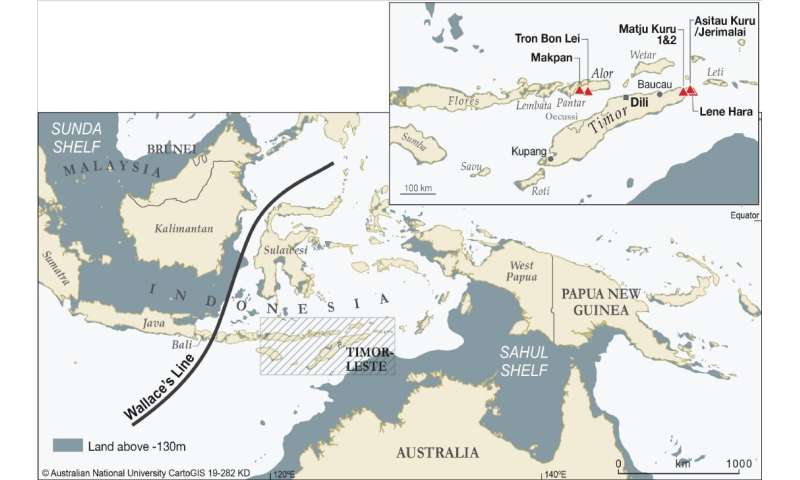Maps showing the location of the sites studied within Wallacea. Asitau Kuru, Lene Hara, Matja Kuru 1 and 2 (Timor), Makpan, and Tron Bon Lei (Alor). Credit: Roberts, et al., (2020), Australian National University CartoGIS 19-282 KD
A new article published in Nature Communications applies stable isotope analysis to a collection of fossil human teeth from the islands of Timor and Alor in Wallacea to study the ecological adaptations of the earliest members of our species to reach this isolated part of the world. Because the Wallacean islands are considered extreme, resource poor settings, archaeologists believed that early seafaring populations would have moved rapidly through this region without establishing permanent communities. Nevertheless, this has so far been difficult to test.
Read the rest of this article...

No comments:
Post a Comment
Note: Only a member of this blog may post a comment.